Pádraig Connery of Clashmore, Co Waterford, welcomed nearly 80 farmers to the Irish Farmers Journal Footprint Farmers Walk held on his tillage farm on Thursday, 20 June.
The attending farmers had the opportunity to observe firsthand the sustainability
practices implemented by Pádraig, which include growing cover crops to reduce
the need for inorganic fertilisers and maintaining several bee hives and owl boxes to promote biodiversity.
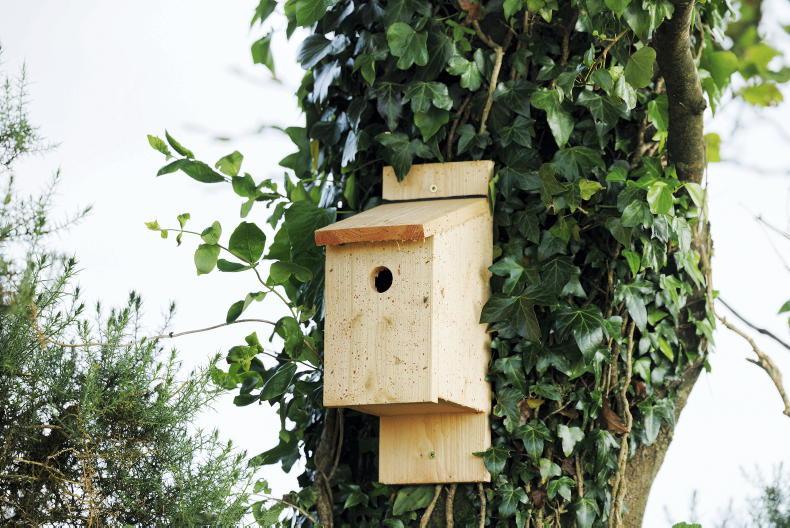
Bird boxes at the Footprint Farmers Farm walk. \ Donal O' Leary
Syngenta launched a new biofertiliser called Vixeran in spring, which helps crops fix nitrogen from the atmosphere, improving nitrogen use efficiency.
Vixeran comes as a solid powder and is applied at a rate of 50g/ha. Trials have shown that spring beans gave an average yield increase of more than 0.5 t/ha from a single application at first flower.
Vixeran helps to increase nitrogen fixation, enables more photosynthesis and increases yield.

Kevin Looby, Denn Feeds. \ Donal O' Leary
Agronomist at Pat Denn Agri, Kevin Looby told attendees at the recent Footprint Farmers farm walk that the Vixeran goes on with the first fungicide, the cost was €9/ac acre, and it makes sense to use this on a high-value crop that is averaging 2t/ac if not more.
He explained that he is not using the Vixeran on other cereals as the results are slightly vaguer, but that he is hoping as time goes on it’ll show if he can increase yields further or cut back on chemical nitrogen application.
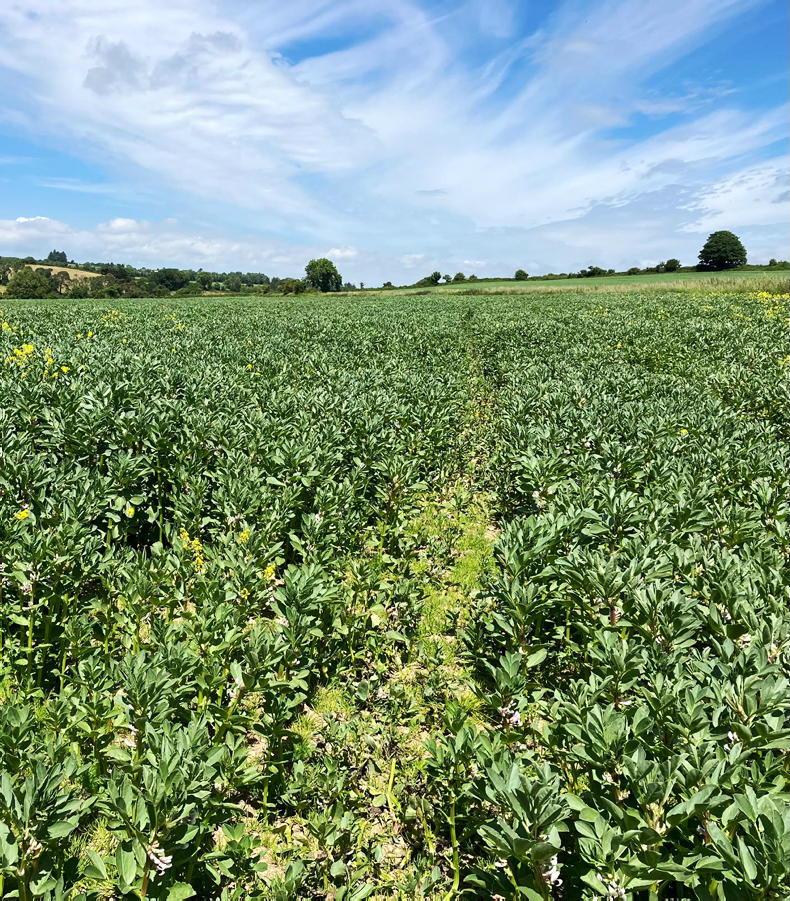
Crop of winter beans sprayed with Vixeran.
Saving €50/ac on fertiliser
Pádraig explained that pig slurry testing as part of the Footprint Farmers programme showed nutrient values as high as 7-7-17 (N-P-K) per 1,000 gallons, which is equivalent to a 50kg bag of artificial fertiliser.
The average results were 5-5-15, though regulations give slurry a standard value of 19-7-20. This highlights the importance of slurry testing.
Reduced need for bagged P and K
Agronomist Mark Hosford noted at the recent Footprint Farmers farm walk that by analysing soil and crop needs, they reduced the use of bagged P and K fertilisers by substituting with pig slurry.
For malting barley, careful management of total nitrogen input is essential to meet protein specifications.
On Pádraig’s malting barley crop, Mark explained that 2,000-2,500gl of pig slurry were applied, which supplied a good amount of the P and K to grow the crop.

Mark Hosford, Southern Fuels and Farm Supplies Ltd \ Donal O' Leary
This reduced the need to only four bags of 23-2.5-10 with Sulphur and growing the cover crops has aided in the reduction.
Mark added that a grower index three for P and K using all bagged fertiliser would use three bags/ac of 13-6-20 and three bags/ac of SulCAN for top dressing, so there was a cut-back of two bags/ac which equates to a saving of €50/ac.
The slurry comes in from a piggery about four miles from Pádraig’s farm, it is spread at a cost of €8-€10/1,000gl. Pádraig feels that what the slurry costs to spread is much less than the value it gives in return.
Pádraig Connery of Clashmore, Co Waterford, welcomed nearly 80 farmers to the Irish Farmers Journal Footprint Farmers Walk held on his tillage farm on Thursday, 20 June.
The attending farmers had the opportunity to observe firsthand the sustainability
practices implemented by Pádraig, which include growing cover crops to reduce
the need for inorganic fertilisers and maintaining several bee hives and owl boxes to promote biodiversity.

Bird boxes at the Footprint Farmers Farm walk. \ Donal O' Leary
Syngenta launched a new biofertiliser called Vixeran in spring, which helps crops fix nitrogen from the atmosphere, improving nitrogen use efficiency.
Vixeran comes as a solid powder and is applied at a rate of 50g/ha. Trials have shown that spring beans gave an average yield increase of more than 0.5 t/ha from a single application at first flower.
Vixeran helps to increase nitrogen fixation, enables more photosynthesis and increases yield.

Kevin Looby, Denn Feeds. \ Donal O' Leary
Agronomist at Pat Denn Agri, Kevin Looby told attendees at the recent Footprint Farmers farm walk that the Vixeran goes on with the first fungicide, the cost was €9/ac acre, and it makes sense to use this on a high-value crop that is averaging 2t/ac if not more.
He explained that he is not using the Vixeran on other cereals as the results are slightly vaguer, but that he is hoping as time goes on it’ll show if he can increase yields further or cut back on chemical nitrogen application.

Crop of winter beans sprayed with Vixeran.
Saving €50/ac on fertiliser
Pádraig explained that pig slurry testing as part of the Footprint Farmers programme showed nutrient values as high as 7-7-17 (N-P-K) per 1,000 gallons, which is equivalent to a 50kg bag of artificial fertiliser.
The average results were 5-5-15, though regulations give slurry a standard value of 19-7-20. This highlights the importance of slurry testing.
Reduced need for bagged P and K
Agronomist Mark Hosford noted at the recent Footprint Farmers farm walk that by analysing soil and crop needs, they reduced the use of bagged P and K fertilisers by substituting with pig slurry.
For malting barley, careful management of total nitrogen input is essential to meet protein specifications.
On Pádraig’s malting barley crop, Mark explained that 2,000-2,500gl of pig slurry were applied, which supplied a good amount of the P and K to grow the crop.

Mark Hosford, Southern Fuels and Farm Supplies Ltd \ Donal O' Leary
This reduced the need to only four bags of 23-2.5-10 with Sulphur and growing the cover crops has aided in the reduction.
Mark added that a grower index three for P and K using all bagged fertiliser would use three bags/ac of 13-6-20 and three bags/ac of SulCAN for top dressing, so there was a cut-back of two bags/ac which equates to a saving of €50/ac.
The slurry comes in from a piggery about four miles from Pádraig’s farm, it is spread at a cost of €8-€10/1,000gl. Pádraig feels that what the slurry costs to spread is much less than the value it gives in return.









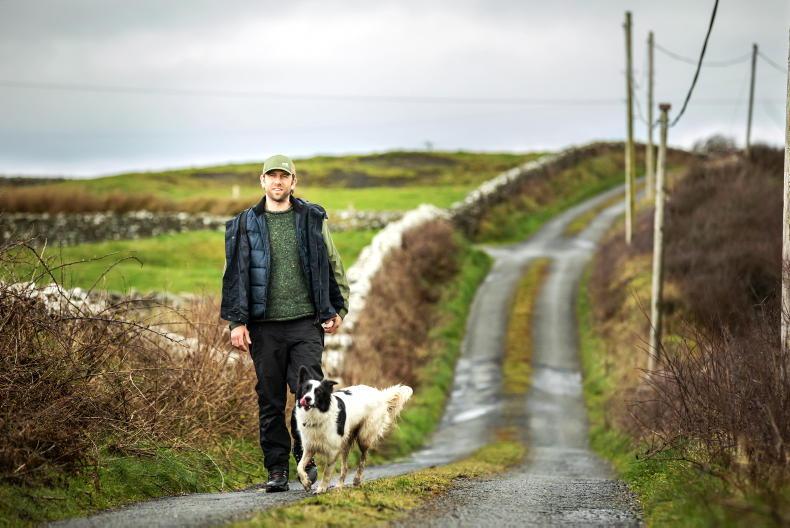

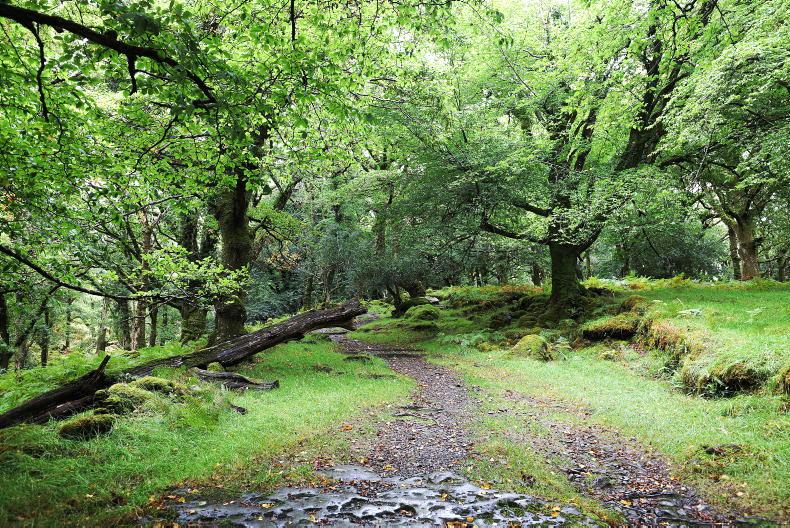

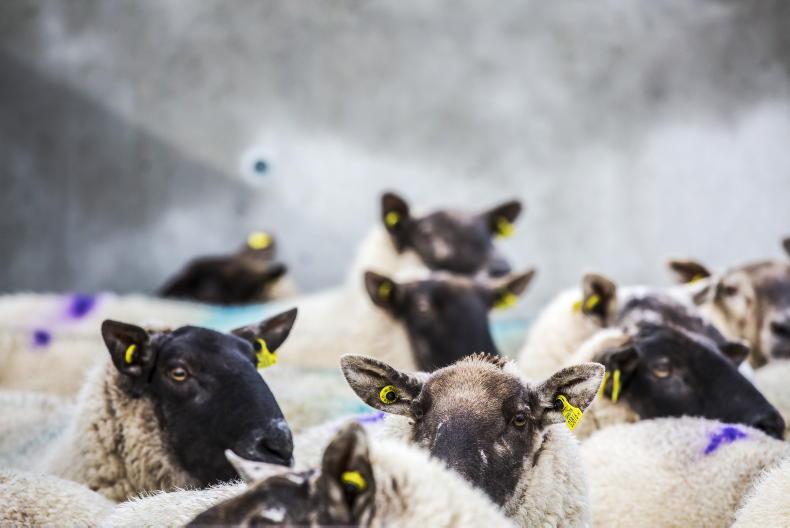
SHARING OPTIONS